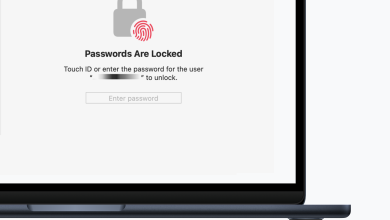How to Forget Wi-Fi Network on macOS?
Saving a network on a system to be used later is a great feature as a user does not have to re-enter credentials every time to connect to a network. But there comes a time when a user may want to forget a network on his Mac e.g., a frequent traveler might have to connect to different networks (using the same SSID but different passwords) or the network’s password has changed but the Mac is not prompting to re-enter the new password, resulting in failure of the Mac to connect to the network. The process to forget the network on Mac is not as simple as on a Windows PC but is just a bit different.

Use the Network Preferences of the Mac
The most basic method to forget a network on a Mac is through the Network Preferences of the Mac.
- Launch the System Preferences of the Mac and open Network. You may also open the Network Preferences by clicking on the Network icon and selecting Open Network Preferences.

Open Network Preferences of Mac - Now, in the left pane, head to the Wi-Fi tab, and then, in the right pane, click on the Advanced button (near the bottom of the menu).

Click on the Advanced Button in the Wi-Fi Tab of the Mac’s Network Preferences - Afterward, in the Wi-Fi tab, select the network that you want to forget in the Preferred Network List.
- Now, near the left bottom of the Preferred Network List section, click on the Minus sign and if asked to, confirm to forget the network. If you want to remove multiple networks, then use CMD + Click to select the networks. If you want to remove all the networks at once, then hit the CMD + A keys and click on the Minus sign.

Select the Problematic Network and Click on Minus - Then click on Apply/OK and check if the network is forgotten in the Mac.

Confirm to Remove the Network in Mac
Keep in mind that if the option did not work, then make sure the device is not part of a corporate network as the corporate policies may be stopping a user from forgetting a network. In that case, disabling the auto joining of the network may work. If that did not work, then moving the network at a lower position (you can drag/drop the networks) in the Preferred Network List may do the trick.
Use the Keychain Access Utility
If the above method did not work or the network re-synced through the iCloud from another device (like iPhone), then using the Keychain Access to remove the network from a Mac may solve the problem. The Keychain Access utility stores certificates, passwords, keys (encryption/decryption), secure notes, etc. The network credentials are stored in the Airport Network Password field.
- Launch Mac’s Applications and select Utilities.

Open Utilities in the Applications Folder of the Mac - Now open the Keychain Access utility and near the top right, click in the search box.

Open Keychain Access in the Mac’s Utilities - Then search for Airport and find the problematic network credentials by looking through the Kind column (the AirPort Network Passwords are the network credentials). If confused, right-click on the entry and select Get Info to find out the entry related to the network.

Remove the Network Credentials in the Keychain Access of Mac - Once found, delete the entry and check if Mac has forgotten the network.
Reset the Mac’s Network Preferences to the Defaults
If the issue persists, then you may reset the Mac’s Network Preferences to the defaults to solve the problem. Keep in mind you may have to re-configure or re-enter network settings of the Mac.
- Launch the Mac’s Finder and select Go.
- Now select Go to Folder and then enter the following:
/Library/Preferences/SystemConfiguration/

Go to the System Configuration Folder of Mac - Then hit Go and delete the following files:
apple.airport.preferences.plist com.apple.network.identification.plist com.apple.wifi.message-tracer.plist NetworkInterfaces.plist preferences.plist

Delete the Files in the System Configuration Folder of Mac to Reset the Network Settings - Now restart the Mac (do not empty Mac’s trash) and upon restart, hopefully, the problematic network would have been forgotten. If so, then you may empty Mac’s trash.
- If not, then check if deleting the following file clears out the error (make sure to replace the <username> with your actual username):
Users/<username>/Library/Preferences/com.apple.eap.profiles.plist
If you are failing to forget a network that is in your control, then check if hiding or renaming the SSID of the network solves the problem. If that does not fulfill your requirements, then you may use a 3rd party utility (like Wi-Fi Explorer) or a UI script to remove the Mac’s Network.





